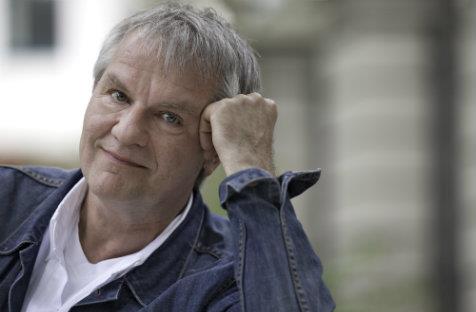He liked to point. In fact, he pointed quite a bit. I think what I’m trying to say is that I haven’t encountered another conductor who pointed as much as Reinhard Goebel did.
It was the Sydney Symphony’s latest concert, entitled Handel’s Water Music: Baroque Grandeur, or Baroque Grandeur: Handel’s Water Music, depending on where you looked. The venue was the Concert Hall of the Sydney Opera House. Goebel strode onto the stage in the usual suit combination, but with the addition of a few flourishes that tended towards the crimson side of the spectrum: a cummerbund of a very striking red, for instance, as well as a bow tie of the same hue. And, for the more observant concert-goer, some red socks to complete the effect. Not that anyone paying for premium seats had much chance to see these accessories, what with the fact that conductors tend to prefer to face the orchestra when they’re conducting (they’re rather adamant about that), but they were visible for the bows after each piece, and that was enough. What we could see, however, was the pointing.
Some conductors like to signal the various parts of the orchestra with a mere flick of the baton, others a nod of the head, others a gentle extending of the hand. Goebel, more often than not, would point, not even with a baton, but with his index fingers. Indeed, he was quite the excitable presence on the platform, including one particularly memorably section in the first piece – Bach’s Sinfonia in D (compiled by Goebel himself) – where he went back and forth between the violins and cellos in quick succession, pointing this way and that with many thrusts of the wrists, looking like a subdued form of Yosemite Sam with enemies on both sides. And, to be perfectly honest, this is what is often needed with baroque music, lest the whole procedure becomes too mechanical – there is some feeling in the music, after all.
The Sinfonia in D, BWV 1045 is, in effect, a violin concerto, and Goebel, as the program tells us, ‘always put[s] it with the two movements from the Easter Oratorio’ – and far be it from him to diverge for the concert in question. Mirijam Contzen took on the solo violin part, melding back into the orchestra for the rest of the piece after her job was done. The performance was one of huge energy and pleasant complication upon pleasant complication, but one must make special mention of the second movement – the Adagio (No.2 from the Easter Oratorio, BWV 249), where Shefali Pryor provided a floating oboe that was wholly enchanting. If you’re at a concert, and the conductor and orchestra can pull off a slow movement of baroque music without losing your attention, then you can know that you’re hearing something special.
Next came Telemann’s Concerto-Suite in F for violin and orchestra, TWV 51:F4, a seven movement work with Contzen again taking centre stage. Here we had a series of movements that didn’t overstay their welcome, and as such was more than a pleasant addition to the program.
After the interval came Handel’s Water Music, not played on a barge as at its first outing in front of King George I – though if any Concert Hall could be said to be on the water, surely the Opera House is it? Recent scholarship has suggested that the music wasn’t played in the three separate suites as common knowledge has it, but rather that the second and third suites were mixed together, and it was these last two suites that we heard (lasting approximately 25 minutes). It was, while not necessarily definitive, nevertheless thoroughly enjoyable, though the flute was sometimes a bit too obscured.
Ending the concert was Pierre-Montan Berton’s Nouvelle Chaconne in E major, a somewhat short number that built to a rousing finale to end the concert on a high. Glorious stuff.
Rating: 4 ½ stars out of 5
Handel’s Water Music: Baroque Grandeur
Sydney Symphony
Conductor: Reinhard Goebel
Violin: Mirijam Contzen
BACH – Sinfonia in D (compiled by Reinhard Goebel)
TELEMANN – Concerto-Suite in F for violin and orchestra, TWV 51:F4
HANDEL – Water Music
BERTON – Nouvelle Chaconne in E major
Concert Hall, Sydney Opera House
6 April





